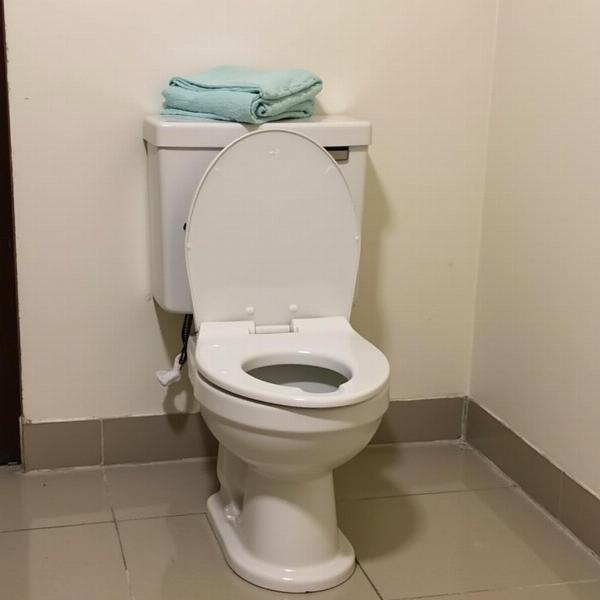Understanding the meaning of “potti” in Hindi is crucial for anyone navigating Indian culture and language. This word, often used casually, carries specific cultural connotations that might be missed by non-native speakers. Therefore, this article delves into the various meanings and usages of “potti” in Hindi, providing a complete understanding of its significance.
What Does Potti Mean?
“Potti” (पॉटी) in Hindi primarily refers to a toilet, particularly a traditional Indian-style squat toilet. It’s a commonly used term in everyday conversations and is understood across various Hindi-speaking regions. While the word itself isn’t considered vulgar, it’s generally used informally among family and friends. Knowing the appropriate context for using “potti” is essential for effective communication and avoiding misunderstandings.
 Traditional Indian Squat Toilet
Traditional Indian Squat Toilet
Variations and Regional Usage of Potti
While “potti” is widely understood, regional variations and synonyms exist. Some common alternatives include “shauchalaya” (शौचालय), a more formal term for toilet, and “sandas” (संडास), which is considered slightly more colloquial. Understanding these variations is beneficial for comprehending different dialects and social contexts.
Potti in Children’s Language
Interestingly, “potti” also plays a significant role in children’s language. Parents often use this term when potty-training their children, making it a familiar word from a young age. This usage contributes to the word’s widespread understanding and acceptance in Indian society.
Potti and Cultural Significance
The use of “potti” reflects more than just a word for a toilet; it’s intertwined with Indian cultural practices and beliefs. Traditional Indian toilets, often designed as squat toilets, are believed to promote better hygiene and digestion. Understanding this cultural context provides deeper insights into Indian lifestyles and traditions.
Why Understanding “Potti” is Important for Translators
For translators working with Hindi, accurately conveying the meaning of “potti” is crucial. Choosing the appropriate synonym or equivalent term based on the context and target audience can significantly impact the clarity and cultural sensitivity of the translation. Mistranslations can lead to miscommunication and even offense, highlighting the importance of linguistic and cultural expertise.
Conclusion
Understanding the meaning and cultural connotations of “potti” in Hindi is essential for anyone interacting with Indian culture and language. This article has explored its various usages, from everyday conversations to children’s language and its cultural significance. This comprehensive understanding is crucial for effective communication, accurate translations, and cultural sensitivity.
FAQ
-
What is the most polite way to refer to a toilet in Hindi? The most polite way to refer to a toilet in Hindi is “shauchalaya”.
-
Is “potti” considered a rude word? “Potti” isn’t inherently rude, but it’s considered informal.
-
What are some other words for “toilet” in Hindi? Some other words for “toilet” in Hindi include “sandas” and “bathroom.”
-
Why is understanding the meaning of “potti” important? Understanding “potti” helps navigate Indian culture and avoid miscommunication.
-
How can I learn more about Hindi language and culture? Resources like language learning apps, cultural guides, and interactions with native speakers can enhance your understanding.
Related Articles
- climatic meaning in hindi
- sarcasm meaning in hindi with example
- iui treatment meaning in hindi
- confabulate meaning in hindi
Meaning-Hindi.in is your trusted partner for professional Hindi translation services. We specialize in various domains, from business and legal documents to technical manuals and website localization. Our team of expert linguists ensures accurate and culturally sensitive translations, bridging the communication gap between languages. Contact us today for all your Hindi translation needs! Email: [email protected], Phone: +91 11-4502-7584. For more information, visit Meaning-Hindi.in.